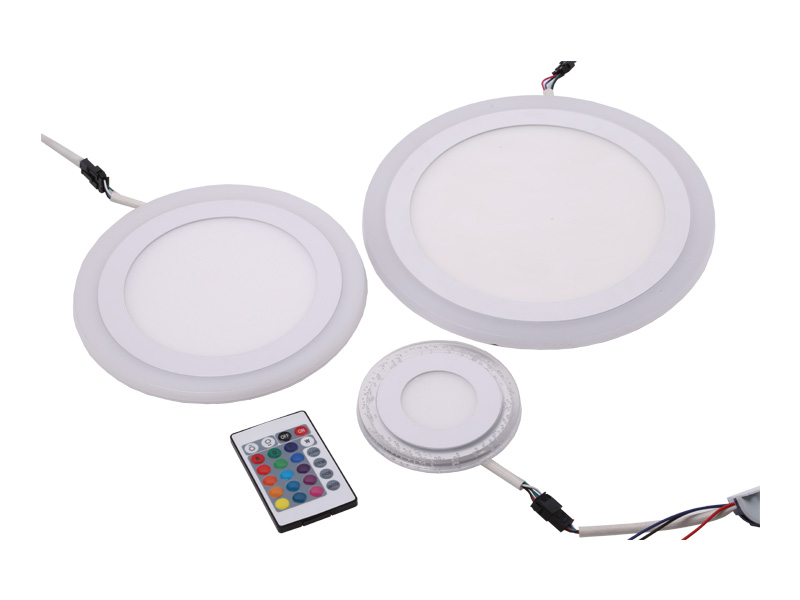Why are LED floodlights the best choice for outdoor lighting?
15-12-2025Ningbo sunle Lighting Electric Co.,Ltd
LED panel lights, as one of the leading innovations in […]
LED panel lights, as one of the leading innovations in modern lighting technology, have gradually replaced traditional lighting methods, becoming the preferred choice for residential, office, and commercial lighting. With their excellent performance and high efficiency, LED panel lights not only improve lighting quality but also significantly reduce energy consumption. Understanding the advantages and applications of LED panel lights can help users make better lighting choices for their needs.
One of the major advantages of LED panel lights is their outstanding energy efficiency. Compared to traditional incandescent and fluorescent lights, LED panel lights have much higher efficiency. LED panel lights operate by passing electricity through semiconductor materials to produce light, with virtually no waste heat. This means that for the same brightness, LED panel lights consume far less electricity than traditional light sources. According to studies, using LED panel lights can reduce electricity consumption by 50% to 80%.
The lifespan of LED panel lights is usually quite long, typically ranging from 30,000 to 50,000 hours, much higher than that of traditional lighting devices. For example, the lifespan of a typical fluorescent light is about 8,000 hours, while LED panel lights last four to six times longer, meaning fewer replacements are needed.
LED panel lights provide even and uniform lighting, reducing glare and hot spots that can occur with traditional lighting. This even light distribution ensures better comfort and reduces eye strain. Additionally, LED panel lights produce virtually no flicker, which is essential in environments where users need to work or read for extended periods.
Unlike traditional fluorescent and incandescent bulbs, LED panel lights do not require a warm-up period and turn on instantly at full brightness. This is particularly beneficial in places where the lights are frequently turned on and off, such as retail stores or homes.

Due to their numerous advantages, LED panel lights are used in a wide range of settings. Whether in homes, offices, or industrial spaces, LED panel lights can provide superior lighting solutions.
Offices are one of the key applications for LED panel lights. These lights provide uniform, soft lighting that reduces flicker and glare, which is common with fluorescent lighting. In long-term work environments, LED panel lights help reduce eye fatigue and improve worker productivity.
In commercial and retail environments, LED panel lights not only provide high-quality lighting but also enhance the aesthetic appeal of the space. These lights can help improve the display of products, making them more attractive to customers.
In homes, LED panel lights are becoming increasingly popular. Whether in the living room, kitchen, or bedroom, these lights provide even, comfortable lighting that creates a cozy and welcoming atmosphere. Additionally, their energy-saving features help reduce household electricity bills.
LED panel lights are also widely used in public facilities such as hospitals, schools, and airports. These locations require high-quality, stable lighting, and LED panel lights offer a solution that meets these demands.
In industrial settings like factories, warehouses, and manufacturing plants, LED panel lights are the preferred choice due to their durability and high efficiency. These environments require reliable and bright lighting to ensure safety and improve productivity.
When choosing an LED panel light, there are several factors to consider, including brightness, color temperature, size, and installation method.
The luminous efficacy of LED panel lights is measured in lumens (lm), which indicates the amount of light emitted. Higher lumen values represent brighter lights. It is important to choose the right brightness based on the size of the space and the intended use. For office and residential spaces, moderate brightness is sufficient, while larger spaces like warehouses or retail stores require higher brightness levels.
Color temperature refers to the appearance of light, and it is usually available in three options: warm white (3000K), neutral white (4000K), and cool white (6000K). The choice of color temperature should depend on the intended environment. Warm white light is ideal for homes and restaurants, while cool white light is better for offices and industrial spaces.
LED panel lights come in various sizes and installation methods, such as recessed, surface-mounted, or suspended. Before purchasing, measure the available space and choose the appropriate size and installation method to ensure compatibility with the room’s design.
LED panel lights, with their energy-efficient, long-lasting, and environmentally friendly features, are rapidly becoming the go-to lighting solution for various spaces. Whether in homes, offices, commercial establishments, or industrial settings, LED panel lights provide high-quality lighting while helping to reduce energy consumption and maintenance costs. By understanding the key benefits and applications of LED panel lights, users can make informed decisions that improve lighting quality, reduce costs, and create a more sustainable environment.
| Feature | LED Panel Lights | Incandescent Lights | Fluorescent Lights |
|---|---|---|---|
| Energy Efficiency | High (50%-80% savings) | Low | Moderate |
| Lifespan | 30,000 - 50,000 hours | 1,000 - 2,000 hours | 8,000 hours |
| Color Options | Warm, Neutral, Cool | Limited | Limited |
| Instant On | Yes | No (requires warm-up) | No (requires warm-up) |
| Maintenance Cost | Low | High (frequent replacements) | Moderate |